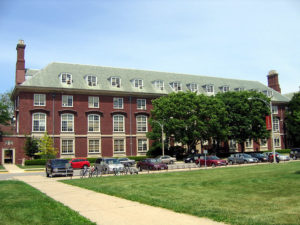Fixing U.S. Higher Education System Is Largely About Cost
The price of a college education, even at public universities, is out of control, causing many Americans to question whether college degrees pay off. Shutterstock
Shutterstock
If you want a higher education in the United States, you need to have money. The average cost of a college education at a public university in the USA is over $20,000. That number balloons to nearly $35,000 for out-of-state students. With unpaid U.S. student debt topping $1.4 trillion, it’s easy to see how the price of college is out of control.
Families adapt mantras early on in a kid’s life: You’re going to a college we can afford. We need to save more. Savings plans. Apply for scholarships. Look for grants.
For increasingly low-income families and a growing number of high-school dropouts, college might not even be a consideration, always out of reach and ridiculously expensive. The mantra then becomes: Get a job. Hustle.
For others, the mantra might be to move—to New York state of all places, where in 2017 the state legislature made college education in its State University of New York system free to families making less than $125,000 annually. Or to Rhode Island, Maine, or New Hampshire, which all have some kind of free state tuition structure.
Free education is a popular idea, and it’s been credited for Vermont Senator Bernie Sanders’ popularity with the coveted 18- to 29-year-old demographic. Last year, Sanders introduced a bill similar to New York’s plan that would make public college and universities free. “Our job — if we are smart — is to make it easier for people to get the education they need, not harder,” Sanders said at a press conference announcing the bill, calling the current state of higher education accessibility and the U.S.’ rapidly falling college graduation rates, “a prescription for failure.” His bill, which also would have cut student loan interest rates, didn’t pass.
The focus of this free education is state institutions, while private colleges and universities have seen their tuition rates rise faster than inflation. Harvard offers “full financial aid to students from families earning less than $65,000”—yet many of those students struggle in a place where fellow students spend massive amounts of money on clothing, recreation and travel, effectively creating economic segregation on campus.
Wendy Lindsay, senior director of the regional student program at the New England Board of Higher Education works among the six New England states to allow students access to public college and university programs in a neighboring state, where they are charged a lower amount than out-of-state tuition.
“We’re seeing that public colleges are doing more with discounting, especially because the number of high school graduates is going down,” Lindsay tells AlterNet. “The number of high school graduates, especially in New England, is predicted to decline 14% between now 2031.”
This steady decline in the number of high school graduates means fewer traditional college-age students are available, she says. Some schools are already seeing enrollments decline, and that’s definitely causing concern. It’s also inspiring colleges to be more creative in how they price things, she explains. “There’s increased recognition that something needs to shift in terms of the pricing. We’re seeing some institutions lower their rates for out-of-state [students].”
At the same time, students and their families have more concern about affordability. “People are scrutinizing the value of college education in terms of what they are getting out of higher education,” she says.
Indeed. In Cambridge, Massachusetts—home of MIT and Harvard—it’s not uncommon to meet a barista with a doctorate, or a Whole Foods employee with a graduate degree. It’s no wonder people are reassessing the value of a higher education, especially when the jobs the highly educated are doing are at the same level any literate high school dropout can obtain.
John O. Harney, executive editor of the New England Journal of Higher Education, says how we think about higher education is changing. “Is higher ed measured by what your job is after? Is it worth the price, especially if you go into debt and you don’t end up with a good job? Then it looks like a trick,” he says.
Harney says at one time, there was a value to just being educated, and that part of the selling of higher education today continues to be that it can create more thoughtful and empathetic people comfortable with diversity.
Yet, “People go to higher ed because they think there’s a good job for them at the end. It depends on what you think is a good job,” Harney says. “The economy used to produce jobs for educated people. The system worked then.”
And certainly, “there are a lot of bad jobs out there, and a lot of them are going to people without a higher education,” as Harney says. But in today’s economic climate, it might be wise to re-evaluate not only the cost of higher education and what one expects to get from it, but also the role one wants in the workforce and in communities—and where one’s talents and passions can fit in those spaces as well.
That evaluation, on an individual, community and local level, might inspire changes to the system beyond the vision it currently seems to have for itself: offering discounts in order to suck in as many 18- to 22-year-old bodies as possible.
After all, even in a state where education is “free,” the system is still getting paid.
Your support matters…Independent journalism is under threat and overshadowed by heavily funded mainstream media.
You can help level the playing field. Become a member.
Your tax-deductible contribution keeps us digging beneath the headlines to give you thought-provoking, investigative reporting and analysis that unearths what's really happening- without compromise.
Give today to support our courageous, independent journalists.




You need to be a supporter to comment.
There are currently no responses to this article.
Be the first to respond.